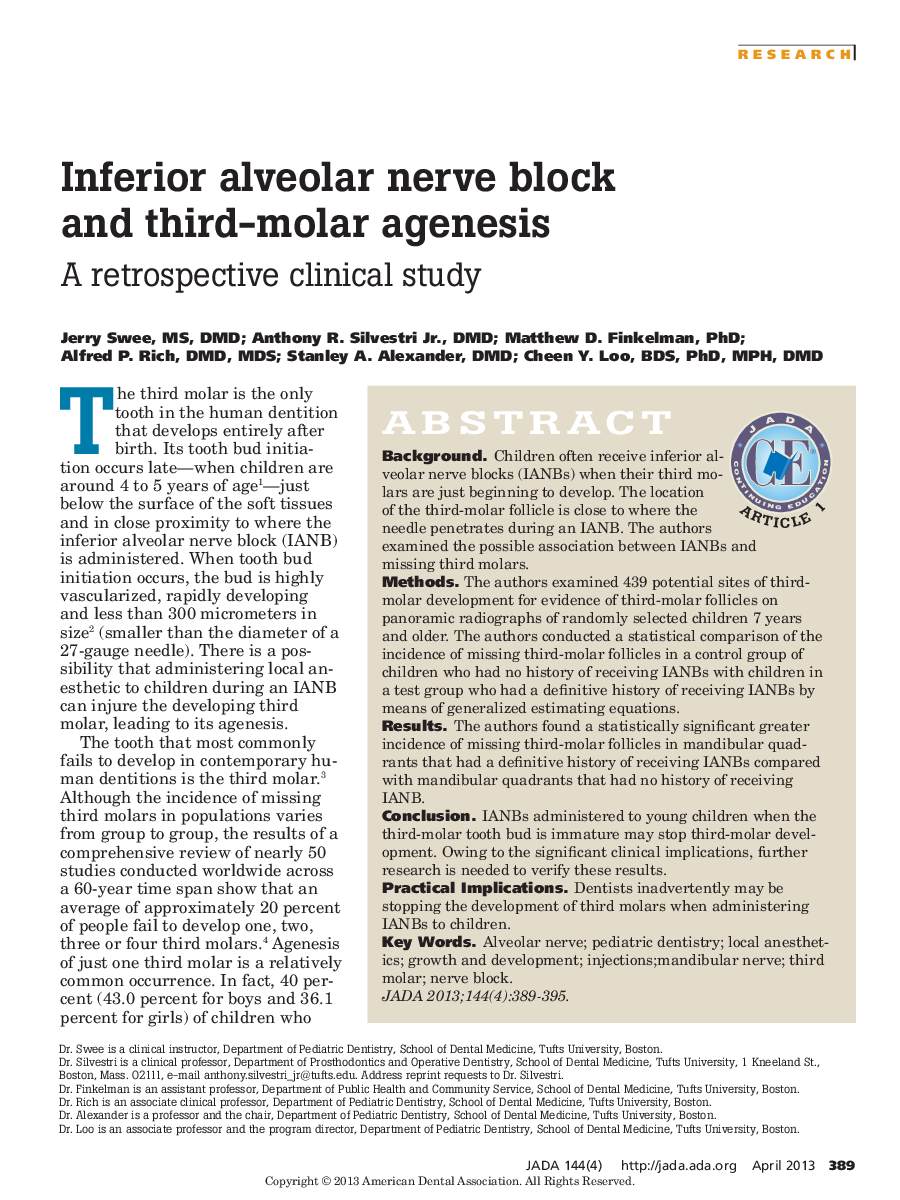| Article ID | Journal | Published Year | Pages | File Type |
|---|---|---|---|---|
| 3137662 | The Journal of the American Dental Association | 2013 | 7 Pages |
ABSTRACTBackgroundChildren often receive inferior alveolar nerve blocks (IANBs) when their third molars are just beginning to develop. The location of the third-molar follicle is close to where the needle penetrates during an IANB. The authors examined the possible association between IANBs and missing third molars.MethodsThe authors examined 439 potential sites of third-molar development for evidence of third-molar follicles on panoramic radiographs of randomly selected children 7 years and older. The authors conducted a statistical comparison of the incidence of missing third-molar follicles in a control group of children who had no history of receiving IANBs with children in a test group who had a definitive history of receiving IANBs by means of generalized estimating equations.ResultsThe authors found a statistically significant greater incidence of missing third-molar follicles in mandibular quadrants that had a definitive history of receiving IANBs compared with mandibular quadrants that had no history of receiving IANB.ConclusionIANBs administered to young children when the third-molar tooth bud is immature may stop third-molar development. Owing to the significant clinical implications, further research is needed to verify these results.Practical ImplicationsDentists inadvertently may be stopping the development of third molars when administering IANBs to children.
